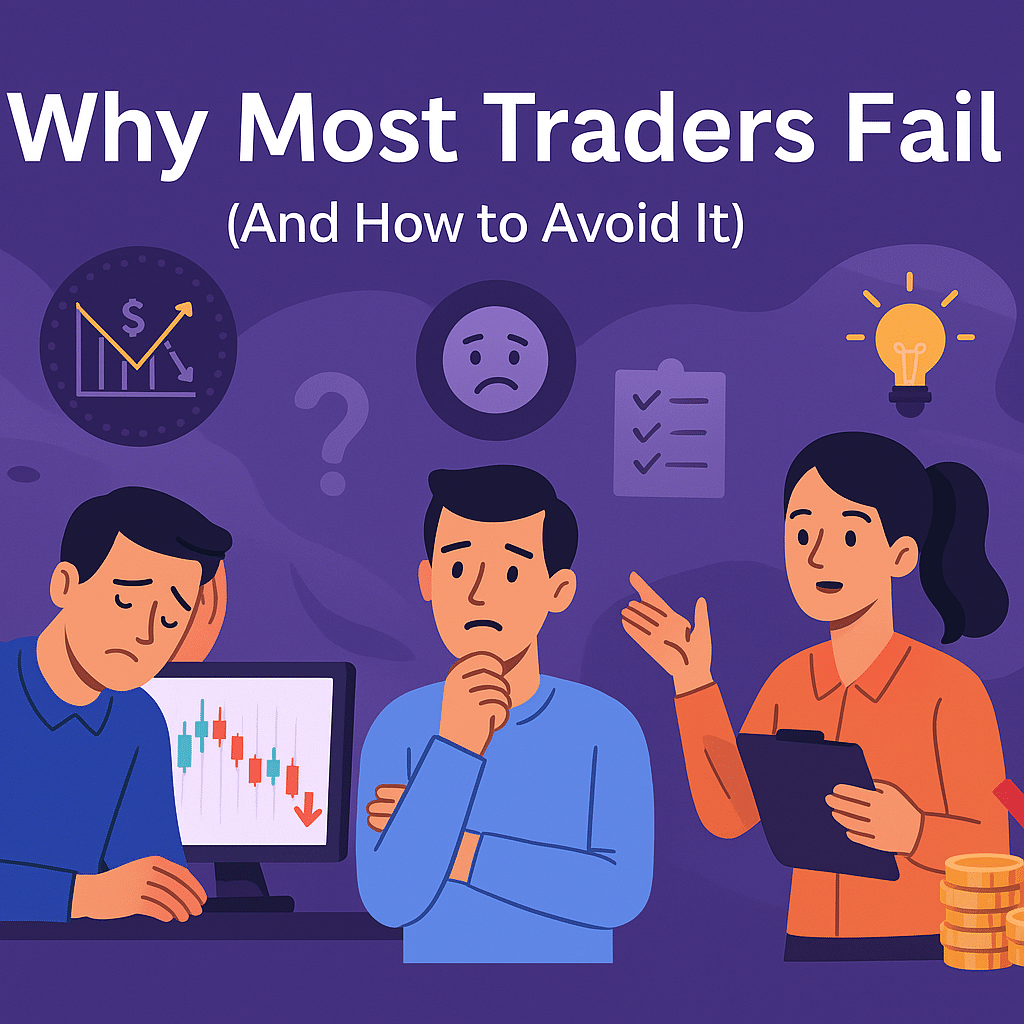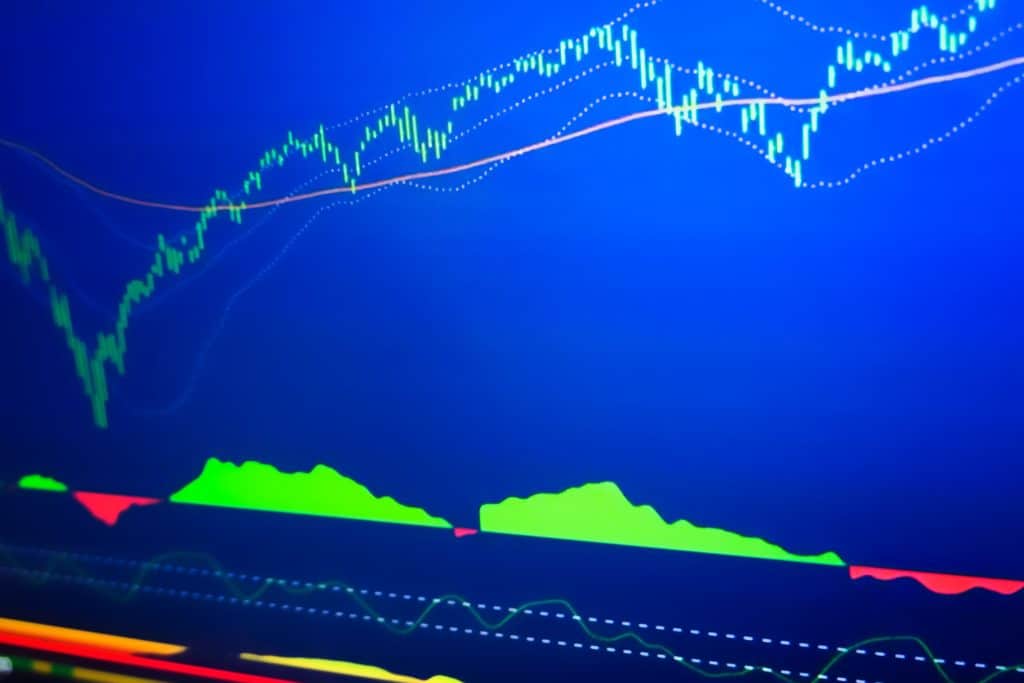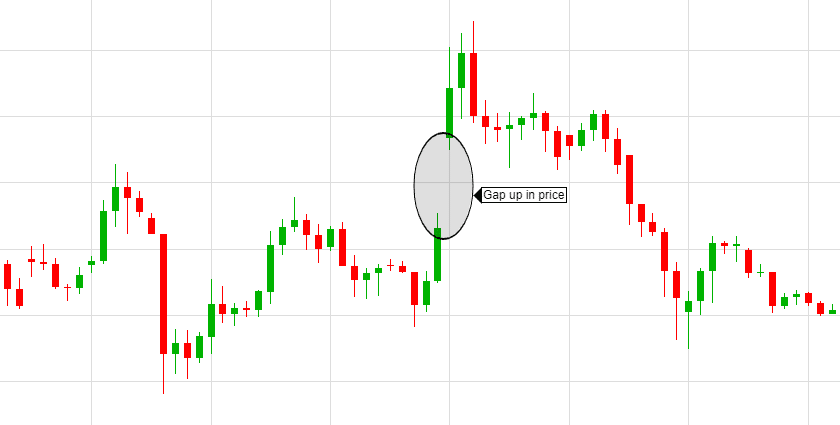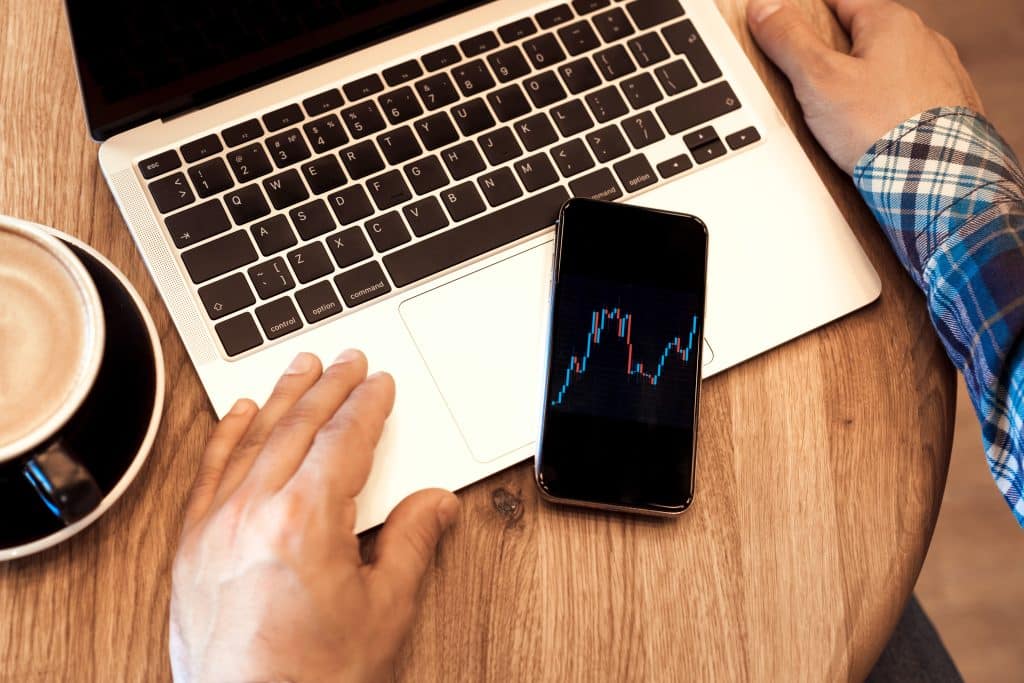Why Most Traders Fail (And How to Avoid It)
Why Most Traders Fail
The 3 Biggest Reasons & How to Overcome Them

Introduction: The Harsh Reality of Trading
Trading has long been romanticized as a fast track to financial independence. Many people imagine a trader sitting at home, comfortably scanning charts, placing trades, and watching their bank account surge with profits. But when you dive into the real-world data, the truth is startling: up to 90% of traders fail in their first year, and even fewer continue trading profitably beyond that.
This sobering statistic isn’t just a random number, it reflects consistent findings across multiple markets, including stocks, forex, futures, and cryptocurrencies. While the specific failure rates may vary slightly depending on the source or the market in question, the overarching message remains the same: the majority of traders lose money.
Why does this happen so frequently, even in an era where market data, analytical tools, and educational resources are more accessible than ever? The reasons are multi-faceted, but they often boil down to three main culprits:
- Poor Risk Management
- Emotional Decision-Making (The Wrong Mindset)
- Lack of a Well-Tested Strategy (No Edge)
If you’re reading this, it’s likely you’re determined to beat the odds and become part of the successful 10% who manage consistent profitability. The good news is that each pitfall can be addressed with the right knowledge, discipline, and tools. Let’s explore these top three reasons why most traders fail, and then dive into effective solutions to help you avoid becoming just another statistic.
Key Takeaways:
- Over 90% of traders lose money consistently.
- Most failures occur due to lack of discipline, insufficient risk controls, and poorly developed trading strategies.
- With a structured approach to risk management, mindset, and strategy, you can rise above the average and thrive in the markets.
Reason #1: Poor Risk Management
If you talk to any seasoned trader who has found success in the markets, one piece of advice will echo over and over again: Risk management is king. Even if you have a spectacular system that picks winning trades 80% of the time, one bad trade without proper risk management can erase months of profits, or even blow up your entire trading account.
The Root Causes of Poor Risk Management
- Overleveraging: This is especially common in markets where leverage is easy to obtain, such as forex and certain derivatives. Traders see the potential for huge gains from a small capital base and forget that leverage magnifies both profits and losses.
- Lack of Stop Losses: Some traders believe they have a “superior” method that doesn’t require stop losses, while others simply find it emotionally difficult to accept losses. Either way, neglecting to place a stop loss is a recipe for disaster.
- Revenge Trading: When a trader experiences a string of losses, it’s tempting to jump back in with heavier positions to “win back” lost money. This impulsive, irrational behavior often leads to even bigger losses.
Without a structured risk management plan, even a handful of poorly managed trades can wipe out a trading account entirely.
How to Fix It: The Risk-Reward Formula
One of the most straightforward ways to improve your odds in trading is to follow a risk-reward formula. The formula itself is simple, yet it forms the backbone of successful trading:
- Risk No More Than 2% Per Trade: Also known as the “2% rule,” this guideline states that you should never risk more than 2% of your total trading account on a single position. This approach ensures that even if you hit a losing streak, your account will still have enough capital left for future trades.
- Maintain a 2:1 Reward-to-Risk Ratio: This means you aim to make twice as much on winning trades as you risk losing on each trade. If you risk $200, for example, you should target at least $400 in profit. With a reasonable win rate—say, around 50%—this ratio can already tilt the probabilities in your favor.
Practical Example:
Assume you have a $10,000 account. With the 2% rule, you risk $200 per trade. If you maintain a 2:1 reward-to-risk ratio, you look for trade setups that offer at least $400 in potential profit. Even if you only win half the time, the math can still work out in your favor over a large sample of trades.
By following this approach diligently, you create a “mathematical edge” that helps protect your account from catastrophic drawdowns.
Stop-Loss Strategies Every Trader Must Know
A stop-loss order is a critical tool that automatically closes your trade when the price reaches a specified level. Here are three popular methods:
- Percentage-Based Stop Loss: You set your stop loss based on a fixed percentage of your account or trade size—typically around 1–2%. If a trade moves against you by that percentage, you exit automatically.
- Volatility-Based Stop Loss (ATR): Markets rarely move in a straight line. Using technical indicators like Average True Range (ATR) helps you set stops that account for normal price fluctuations. This way, you don’t get stopped out prematurely by minor swings.
- Support & Resistance Stop Loss: By analyzing key support and resistance levels on your chart, you can place a stop loss below a significant support line (in an uptrend) or above a significant resistance line (in a downtrend). This method makes logical sense because if these levels break, your trade thesis is often invalidated.
Tip: Combine risk management and stop-loss techniques in your trading plan. Consistency in using stop losses helps eliminate emotional guesswork and protects your trading capital.
Reason #2: The Wrong Trading Mindset
Emotions often prove more damaging to a trader’s account than any external factor like market volatility or economic news. It’s frequently said that 90% of trading is psychology, while 10% is strategy. Without the right mindset, no trading strategy—no matter how robust—will yield sustainable success.
Common Psychological Traps
- Fear: Fear can manifest as hesitation to enter a good setup or prematurely exiting a profitable trade. Traders who succumb to fear may cut their winners too soon, missing out on big profit opportunities.
- Greed: This is the opposite side of the coin. Greedy traders might chase trades that lack proper setup, or they might overleverage in an attempt to make “easy money” quickly.
- Revenge Trading: After a losing streak, traders may feel an urge to “get back at the market.” This leads to rash decisions, larger position sizes, and typically larger losses.
How to Fix It: Think Like a Professional
Professional traders approach the market much like a successful entrepreneur approaches a business venture: methodically, with a keen awareness of risk and a systematic plan.
- Detach from the Money: Ironically, caring less about the money can lead to better trading decisions. If you’re too emotionally invested in each dollar, fear and greed can overwhelm your logic.
- Stick to a Plan: Have a well-defined trading plan that outlines your entry criteria, exit points, and risk management rules. If you’re constantly second-guessing yourself mid-trade, your psychology is likely to sabotage your performance.
- Maintain a Trading Journal: Recording each trade (including the rationale behind it, the outcome, and any emotional factors that influenced your decision) is one of the best ways to refine your mindset and strategy over time.
Pro Tip: Use mindfulness or simple breathing exercises before and after trading sessions to stay calm and centered. This helps to keep emotions at bay and ensures your decisions are based on analysis rather than impulse.
Overcoming Emotional Trading {#emotional-trading}
You might think that with enough time and experience, emotional trading won’t affect you. However, even seasoned professionals admit that it’s an ongoing battle. The key is awareness and consistent, disciplined effort to manage these emotions.
- Set Realistic Expectations: Don’t expect to turn $1,000 into $1 million overnight. Unrealistic goals can push you into high-risk trades.
- Limit Screen Time: Staring at the charts every second can heighten anxiety and lead to impulsive decisions. Sometimes, stepping away or setting alerts for critical price levels is more productive.
- Celebrate Small Wins: Every profitable trade, no matter how small, demonstrates that your plan works. Reward yourself for following the process, not just for making money.
When you manage your mindset properly, you’re setting yourself up for consistent results, because you’re no longer at the mercy of every fear, rumor, or market swing.
Reason #3: Poor Strategy & Lack of Edge
A “trading edge” refers to having a statistical advantage over a series of trades. If you lack a proven strategy or don’t fully understand how and why it works, you’re effectively gambling. Luck can make you money in the short term, but consistency comes from a repeatable, data-backed edge.
Symptoms of a Poor Trading Strategy
- Random Entries and Exits: Maybe you jump into a trade because “it feels right” or you saw someone mention a hot tip on social media. Without specific, objective criteria, you can’t measure or refine your approach.
- No Defined Edge: An edge might come from technical indicators, price action setups, quantitative models, or even fundamental analysis. If you can’t clearly articulate your edge, you probably don’t have one.
- Inconsistent Application: You might have a good strategy on paper, but if you don’t apply it consistently—skipping trades out of fear or chasing trades out of greed—you won’t see its true potential.
How to Fix It: Developing a Profitable Trading Plan
A well-structured trading plan is not just a list of rules, it’s the blueprint for your entire trading operation. Here’s how to build one:
- Define Your Trading Style: Are you a day trader, swing trader, or position trader? Do you prefer momentum stocks, forex pairs, or index futures? The first step is to specialize in a market and style that resonate with your personality and time availability.
- Outline Entry & Exit Criteria: Identify the exact conditions under which you’ll enter a trade (e.g., a moving average crossover, a price action pattern, or a bullish divergence on the RSI). Specify how you’ll exit, whether it’s hitting a profit target, trailing stop, or time-based exit.
- Incorporate Risk Management: Include how much of your account you’ll risk per trade, how you’ll move your stop loss if the trade goes in your favor, and any maximum daily or weekly drawdown limits.
- Specify Performance Tracking: Decide how you’ll track each trade (spreadsheet, specialized software, or a trading journal). The key is to review your performance periodically.
Remember: A profitable plan doesn’t guarantee immediate success. Markets change, and no strategy has a 100% win rate. But a consistent, data-backed plan increases your chances of navigating various market conditions successfully.
The Importance of Backtesting & Data Analysis
Backtesting involves running your trading strategy through historical market data to see how it would have performed in the past. While past performance is not a guarantee of future results, it helps you:
- Validate Your Edge: Confirm whether your strategy is conceptually sound. If it never worked historically, it likely won’t work now.
- Gain Confidence: A trader who knows their strategy made money over 200 historical trades is more likely to stick to the plan through drawdowns.
- Fine-Tune Parameters: Through backtesting, you can adjust indicators or risk parameters and discover the most robust settings for various market conditions.
After backtesting, a trial period on a demo account or small live account is a prudent step. This “forward testing” ensures that real-world conditions—slippage, spreads, or emotional factors—don’t invalidate the strategy.
Final Thoughts: The Path to Success
By addressing these three fundamental pillars—risk management, mindset, and strategy—you put yourself on the path to successful trading. While the journey isn’t easy, it’s important to remember that trading is a skill like any other. It requires time, education, practice, and the ability to adapt to evolving markets.
Actionable Steps You Can Take Today:
- Assess Your Risk Management Plan: Are you strictly limiting your risk per trade to 1–2% of your account? If not, it’s time to tighten those parameters.
- Do a Mindset Check: Keep a trading journal for a week. Document every emotional spike—fear, greed, impatience—and evaluate how it affected your performance.
- Evaluate Your Strategy: Can you articulate your trading edge in one or two sentences? If not, clarify or refine it through backtesting, data analysis, or additional education.
Remember: Trading success is about process over outcome. The profit is a byproduct of executing a robust process consistently. Focusing on building good habits and refining your craft will naturally lead to more profitable results over time.
If you’re looking for a supportive environment where you can learn, grow, and trade with professionals, consider joining a reputable trading community or a live trading room. Surrounding yourself with experienced traders can significantly accelerate your learning curve.
Frequently Asked Questions (FAQ)
1. What percentage of traders fail?
Over 90% of traders fail because they lack proper risk management, trade with the wrong mindset, or use poor strategies. This statistic can vary slightly by market, but it consistently highlights how most new traders struggle without a solid foundation.
2. Can anyone become a successful trader?
Yes, anyone with the right commitment, discipline, and education can become a successful trader. However, it’s not a “get-rich-quick” endeavor. Success requires mastering risk management, developing emotional control, and honing a consistent, well-tested trading strategy.
3. What is the best way to manage risk in trading?
The most critical aspect of risk management is to limit your losses on each trade. Many traders follow the 2% rule, meaning they never risk more than 2% of their account per trade. Additionally, aiming for a 2:1 reward-to-risk ratio ensures that profitable trades outweigh losses over time.
4. How do I handle emotional trading?
- Use a Trading Journal: Document every trade and the emotions involved.
- Set Realistic Goals: Don’t expect overnight riches—focus on skill-building.
- Implement Structured Rules: Rely on predefined entries, exits, and stops, so you’re not making impulsive decisions on the fly.
5. Is backtesting really necessary?
While not absolutely mandatory, backtesting greatly increases your confidence and understanding of your strategy. It helps you spot flaws, optimize parameters, and gain valuable insights into how your approach might behave under different market conditions.
Ready to take your trading to the next level?
- Join our free trading newsletter for exclusive tips and proven strategies from industry professionals.
- Consider a live trading room membership where you can watch real-time analysis, ask questions, and develop your skills alongside experienced traders.
By avoiding the three biggest reasons why most traders fail and focusing on discipline, proper risk management, and a data-backed strategy, you’ll give yourself the greatest chance to thrive in the challenging yet rewarding world of trading. Good luck, and may your trades be both calculated and profitable!
? Explore our services below and start building your edge in the market:
- Day Trading Room
- Swing Trading Room(Short-term)
- Small Account Mentorship
- SPX Trading Alerts(Alerts Only)
- Revolution Swings(Alerts Only)
Related Articles
To your success,

Billy Ribeiro is a globally recognized trader renowned for his mastery of price action analysis and innovative trading strategies. He was personally mentored by Mark McGoldrick, famously known as “Goldfinger,” Goldman Sach’s most successful investor in history. McGoldrick described Billy Ribeiro as “The Future of Trading,” a testament to his extraordinary talent. Billy Ribeiro solidified his reputation by accurately calling the Covid crash bottom, the 2022 market top, and the reversal that followed, all with remarkable precision. His groundbreaking system, “The Move Prior to The Move,” enables him to anticipate market trends with unmatched accuracy, establishing him as a true pioneer in the trading world.
Connect with us:






